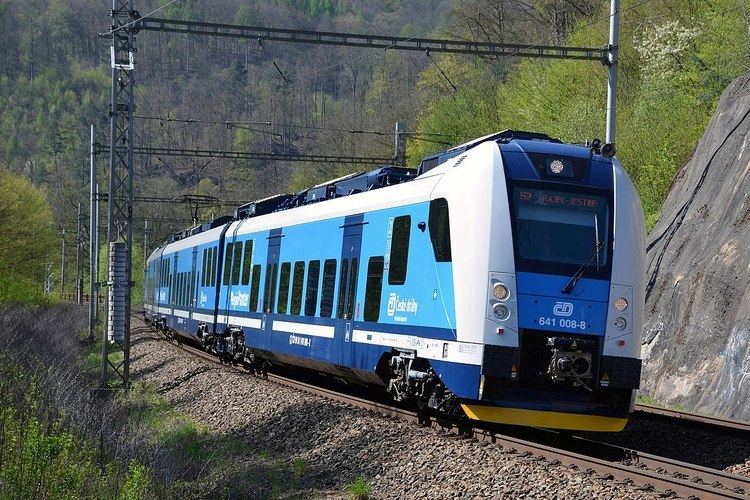National railway České dráhy | ||
 | ||
Infrastructure company Správa železniční dopravní cesty Major operators PassengersČeské dráhyRegioJetLEO ExpressFreightČD CargoAWTMETRANS Total 9,619 kilometres (5,977 mi) Double track 1,830 kilometres (1,140 mi) Electrified 2,997 kilometres (1,862 mi) | ||
Rail transport in the Czech Republic carried 162.906 million passengers and 68.37 million tonnes of cargo in the year 2009. The majority of passenger services run nowadays are operated by the state company České dráhy (Czech Railways), which until 2007 also managed cargo services now run by ČD Cargo. In 2009 the country had 9,420 km of standard gauge track, 3,153 km of which is electrified. The network has same gauge links to all four countries bordering the Czech Republic (Slovakia, Austria, Germany and Poland) with passenger services to all four countries in operation. Major hubs for international passenger services on the network are in Prague, Ostrava and Břeclav, and the busiest station (by number of passengers) is Praha hlavní nádraží.
Contents
History
History of rail transport in the territory of the present day Czech Republic dates back to the Austro-Hungarian empire. The first horse-drawn railway in Europe, between České Budějovice and Linz (in present-day Austria) commenced operations in 1832, and the first locomotive-hauled railway from Vienna to Břeclav opened seven years later. Throughout the rest of the 19th century the rail network in the whole of Europe grew rapidly and after the First World War and the independence of Czechoslovakia, the company Československé státní dráhy (Czechoslovak state railways) was founded. From 1948 until the Velvet Revolution the border crossings with Austria and West Germany were strictly controlled. Following the fall of communism, the railway network was reopened to Western Europe; the first EuroCity trains operated in transitional Czechoslovakia in 1991. In the 21st century the network has undergone extensive modernisations, and newer rolling stock (such as the Class 680 "pendolino") have been introduced.
Operation
The company Správa železniční dopravní cesty (SŽDC) is responsible for maintaining the infrastructure. In 2010, the Czech government proposed merging SŽDC and České dráhy to a single company. In 2011, RegioJet, a subsidiary of Student Agency, became the first company to actively compete with České dráhy on a route, launching a service between Prague and Havířov. Other private companies own exclusive rights to run services on certain lines. The Czech Republic is a member of the International Union of Railways (IUC) and has the country code 54.
